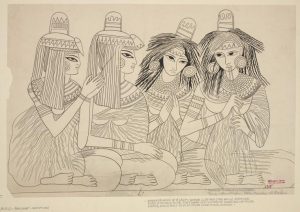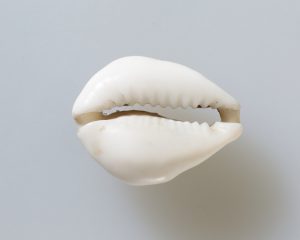Running outside, chasing your friends, playing with Legos–these are things you might remember doing as a young child. However, from the late 1700s to the mid-1800s in Britain, being paid meager wages and working for as much as sixteen-hour days with dangerous mining equipment was the norm for many young, British children. During the Industrial Revolution this was an ugly reality. Many working-class families found it necessary to have their children work alongside them in the mines. Because of their size and cooperation, and because it was easier to pay them less, these children were paid about five times less than men for the same number of hours worked, which for these young miners could be up to fourteen-hour days.1

Before the Mines and Collieries Act of 1842, children as young as four were allowed to work in the mines.2 Just imagine such young children running around a dark coal mine–it simply does not sound safe at all. These children were hired to be able to get into those hard to reach places that fully grown adults were unable to get into. During the Industrial Revolution, coal was a major source of energy, and was extremely important because it burned hotter than wood charcoal. The primary use of coal was used as a source of energy, and used to power the steam engines of factories, where many other children also worked. Because of its high demand and necessity, it helped increase jobs for the working people. Because of these factories, major industrial cities such as Birmingham, Manchester, and Liverpool, grew at a fast pace from small villages into large cities.3

In British coal mines, children typically had one of three jobs. Trappers, typically the youngest, would open and close the wooden doors–also called trap doors–to allow fresh air to flow through the mine. These trappers would sit in darkness for almost twelve hours at a time. It may seem a simple task, but if one of these little ones fell asleep, the job could become very dangerous. Other jobs were the tasks of hurrier and thruster. These jobs were usually given to older children and women. These workers had to pull and push tubs that were full of coal along the roadways, all the way to the pit bottom. The hurriers would be harnessed to the tub, and the thrusters would then help hurriers by pushing these tubs of coal. The thruster would have to push tubs of coal weighing over 600 kilograms from behind with their hands and the tops of their heads. The thrusters, mainly older girls, had to carry these baskets of dug coal, which were much too heavy for them. Because of their heavy weight, it would then cause their young, growing bodies to develop with deformities. The last typical job was the getter. This one was typically assigned to the oldest and strongest, usually grown men or strong, older teens. This job required them to work at the coal face, cutting the coal from the seam with a pickaxe. This was typically the only job where they would use a candle or safety lamp for light, as cutting the coal required it.4 Although the work at the coal mine may not seem very difficult, it was very dangerous. In one unnamed coal mine, 58 of the total 349 deaths in one year involved children thirteen years or younger.5

Those who worked in coal mines–whether below or above ground–were exposed to life-threatening working conditions that could ultimately be detrimental to their health. Children, mainly boys as young as eight, worked as breakers. Here, the coal was crushed, washed, and sorted according to size. The coal would come down a chute and along a moving belt. These breaker boys would work in what was called the picking room. Here, they would work hunched over for ten hours a day, six days a week, sorting the rock and slate from the coal with their bare hands. If their attention even drifted for a second, they could lose a finger in the machinery.6 The work also resulted in their exposure to a large amount of dust. In some cases, the dust was so dense that their vision would be obstructed. This dust would also get into their lungs, which needless to say, was terrible for their health.7 These children sometimes even had a person prodding or kicking them into obedience to make sure their attention did not stray.
These working conditions for children continued until the United Kingdom’s Parliament passed the Mines and Collieries Act of 1842. The act included a report that informed the public about how children as young as five years old were working as trappers for “twelve hours a day and two pennies a day.”8 It was not until the Children’s Employment (Mines) Report came out alongside it in 1842 that Parliament passed the act that all boys and girls under the age of ten were not allowed to work in the coal mines.9 Even after this law prevented children under fourteen from working in the mines, people still found ways around it. For example, since some regions did not have a compulsory registration of birth, someone could easily lie and claim that these boys were simply “small for their age.” Finally, with this legislation came the snowball effect of humanitarians and a larger awareness of health and safety regulations for workers, which led to the start of the end of child labor in England.10
- Children’s Employment Commission First Report of the Commissioners (Mines), (Halifax: Irish University Press, 1842), 77-81. ↵
- Encyclopedia Britannica.com, December 2012, s.v. “Anthony Ashley Cooper, 7th earl of Shaftesbury,” by Editors of Encyclopedia Britannica. ↵
- New World Encyclopedia, February 2017, s.v., “Child Labor,” by New World Encyclopedia Contributors. ↵
- Great Britain Commissioners, The Condition and Treatment of the Children employed in the Mines and Colliers of the United Kingdom Carefully compiled from the appendix to the first report of the Commissioners With copious extracts from the evidence, and illustrative engravings, (London: 1842), 19-59. ↵
- J. M. Mason, “Protection of Children,” The Westminster Review Vol. 36 (1841): 66. ↵
- Jane Humphries, “Short stature among coal-mining children: A comment,” Economic History Review 1, no. 3 (1997): 533. ↵
- Jane Humphries, “Short stature among coal-mining children: A comment,” Economic History Review 1, no. 3 (1997): 535. ↵
- Encyclopedia Britannica.com, December 2012, s.v. “Anthony Ashley Cooper, 7th earl of Shaftesbury,” by Editors of Encyclopedia Britannica. ↵
- “Early Factory Legislation.” Parliament. UK. (April 9th, 2017). ↵
- J. M. Mason, “Protection of Children,” The Westminster Review Vol. 36 (1841); 45-47. ↵



98 comments
Eric Ortega Rodriguez
Let me start off by saying how sad it is that so many children had to experience this form of labor. It is sad to hear of the terrible physical consequences of labor in the coal mining industry would have on children. The author does a good job incorporating images within his article, it allows the audience to visualize how some of the children who went through this looked like. Especially when the author mentions consequences like lost in sight, inability to breath, and many more. Overall, a very well written article. Good work.
Victoria Salazar
It is sad to read about the brutal labor that these children were put through because although child labor is prohibited in the Western world, it still exists in many developing countries. Aside from the physical deformities that cruel labor causes children, it could also cause mental deformities. This means that children could become used to the idea that those jobs are where they belong and cause them to not get an education for a better life.
Samantha Ruvalcaba
It’s unfortunate that small children were put under this sort of stressful and dangerous labor–and in some countries, they still are. I’m glad the writer made sure to mention what jobs these small children would do because my first thought was, “what sort of tasks would adults ask these small, undeveloped children to be responsible for?” They all seemed like tasks that should’ve been completed by adults, or not at all. My question was immediately answered. I wish that more countries were able to end child labor even quicker than England did–or not have it at all.
Danielle Slaughter
What a terrible life these children had to lead. While the Industrial Revolution most definitely paved the way for human progress in the nineteenth and twentieth centuries, one has to wonder, at what cost? What price did the weakest among us have to pay? Certainly no amount of progress is worth the lives of young, innocent children. Even if they didn’t perish in a mine collapse, they would have had to face years of debilitating health issues, not the least of which cancer and other severe ailments. You wrote a wonderful article calling remembrance to a travesty in the name of progress.
Diego Terrazas
It is disheartening to read what these children had to go through. Coal mines even today are rather dangerous, I could not imagine how much more dangerous it was back then. It was interesting to read that working in these coal mines caused deformities in the children, since their bones are not fully developed and are rather fragile they would be more susceptible to physical injuries and permanent ones at that.
Nicolas Vicinanza
What a great written article! It was kind of sad hearing these stories of children being mistreated back in the 19th century. Humans have come a long way with enacting labor laws. The environments these kids went through were actually scary, dangerous, and treacherous. Kids should be able to have dreams and go to schools rather than working in sweatshops.
Maisie Favila
Learning about child labor was very hard to hear but interesting at the same time. It’s crazy to hear the stories of these children being mistreated during the 19th century. I’m glad labor laws are now a thing so that this doesn’t continue to happen anymore. The environments they were put in was already harsh enough, what they were put to do was just adding on. Overall, this article was very interesting and well written.
Nathalie Herrera
It is awful to hear this story of children being forced to work in coal mines in such horrific conditions. To think it is acceptable to allow children to be “trappers” and let them sit in the dark for up to twelve hours is tragic. Nonetheless, allowing them to push and pull tubs of coal. To place children in such environment is cruel and although this was a heartbreaking story it is good to recognize and learn what was being done during those times.
Eric Ortega Rodriguez
Wow, this is a very fascinating yet sad article. It is difficult to believe that this is how child labor was in the late 1700s to the mid-1800s in Britain. It is extremely sad to also read that working in the coal mines would have terrible physical consequences such as lost in sight, inability to breath, and many more. Overall, a very well- written article with an excellent topic choice. Good image selection as well!
Esperanza Rojas
I was so intrigued because this article was so well written, from the very beginning it had a great beginning sentence that, not only, caught my attention by my sympathy which was a great usage of pathos. For the topic itself, it was horrible that many children gave up their childhood for work, and to be taken advantage of by being paid 5 times less than the normal working man, and most likely put in more dangerous working environments. This whole idea of children working and how they worked was inhumane, nad I truly feel that the cities that benefited from this shouldn’t be cities at all.